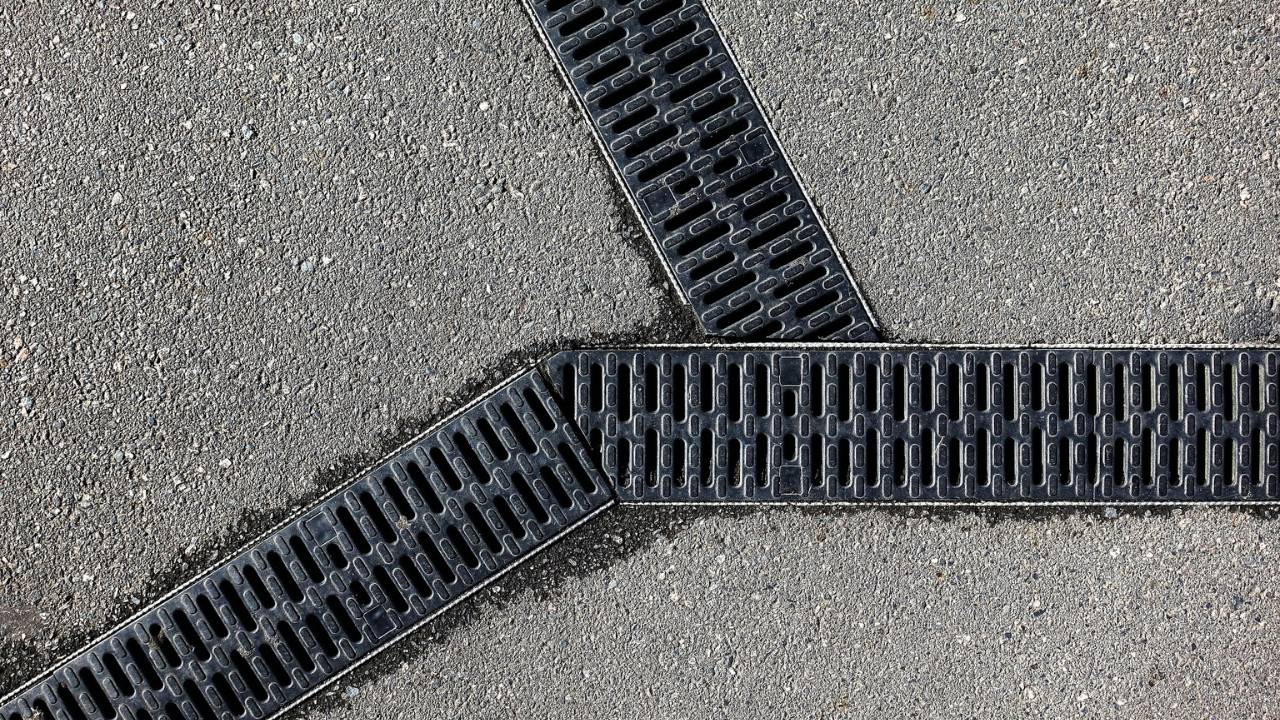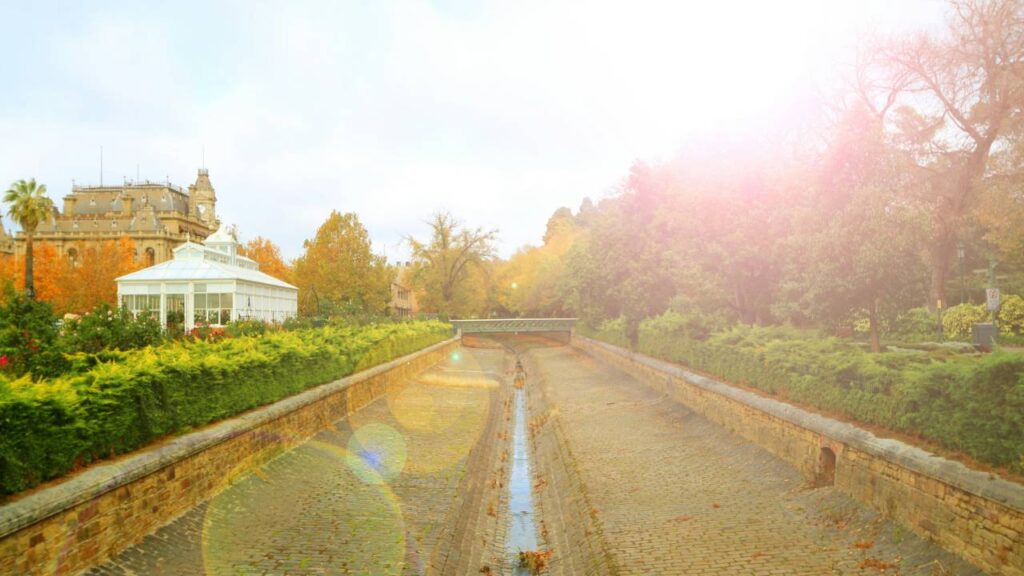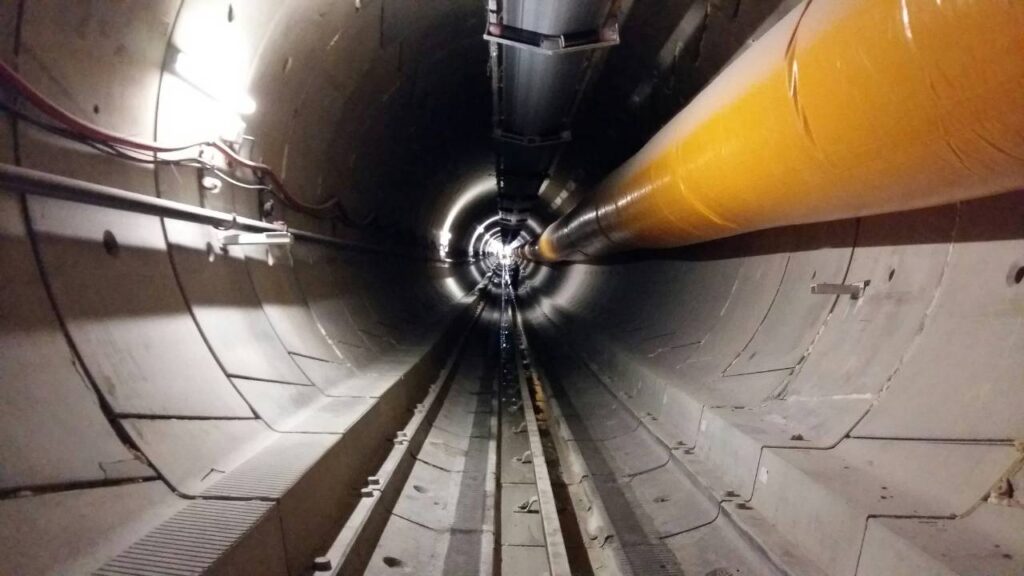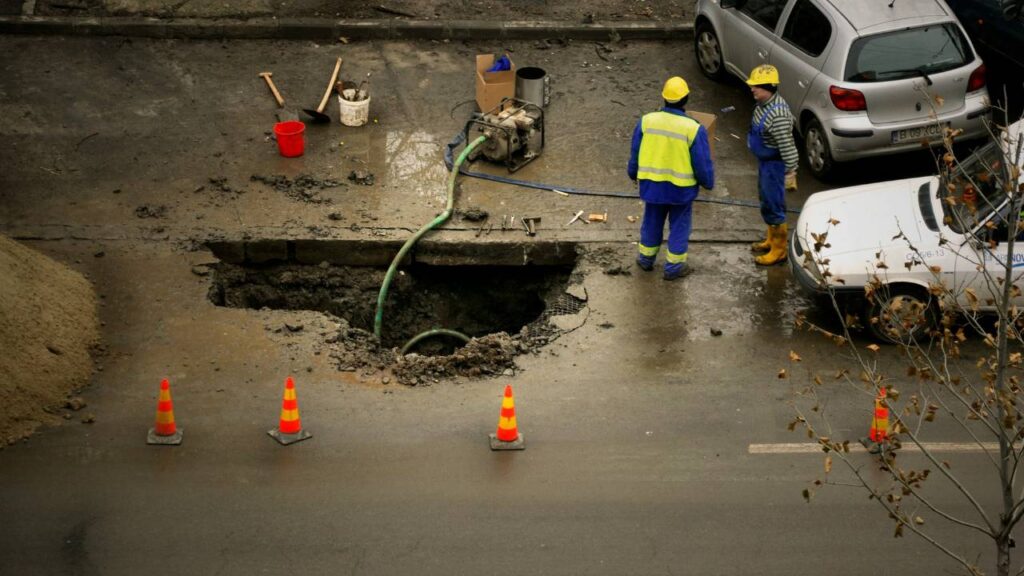
Modern architecture often sees a seamless integration of form and function, where aesthetics coalesce with practical solutions to create sustainable and visually striking environments. The key to achieving this lies in incorporating effective drainage systems that prevent water accumulation and damage while enhancing the building’s design. As urban areas grow and face changing climate conditions, the importance of proper drainage becomes even more pronounced.
Incorporating drainage solutions into contemporary structures requires a blend of innovative design and advanced technology. Architects and engineers are challenged to create systems that handle water efficiently without compromising on the overall visual appeal. Recent advancements provide opportunities to integrate drainage seamlessly into the architecture, turning potential vulnerabilities into points of strength.
From green roofs to permeable pavements, modern projects showcase inventive ways to handle challenges posed by drainage. These solutions not only protect buildings but also contribute to environmental sustainability. As architecture continues to evolve, ongoing dialogue and innovation in drainage design remain essential for creating functional and enduring buildings.
Understanding the Basics of Drainage in Architecture
Effective drainage is vital in modern architecture, directly impacting both the structural integrity and sustainability of buildings. Climate change has introduced additional challenges, necessitating innovative drainage solutions.
The Importance of Effective Drainage Systems
The role of drainage systems in architecture is crucial for maintaining the longevity of structures. Proper drainage prevents water accumulation that can lead to structural damage, leakage, and mould growth. Drainage systems are integral in safeguarding buildings from the detrimental effects of water, especially in urban settings where impermeable surfaces are prevalent.
In urban drainage, sustainable drainage systems (SuDS) are gaining importance. These systems aim to manage water close to its source, using techniques like permeable pavements and green roofs. Such innovations help reduce surface runoff and enhance water quality. A well-planned drainage system not only preserves the structural health of a building but also contributes significantly to the aesthetics of its surroundings.
Impact of Climate Change on Drainage Solutions
Climate change significantly impacts drainage design by increasing the frequency and intensity of extreme weather events. Traditional drainage systems are often insufficient to manage the heightened levels of precipitation, leading to floods and infrastructure damage. Architects and urban planners need to adapt to these changes by incorporating resilient and flexible drainage solutions.
Sustainable drainage systems offer a targeted response to these challenges. By integrating green infrastructure like bioswales and rain gardens, these systems mitigate flood risks and promote groundwater recharge. The innovative approach balances the need for effective water management while maintaining ecological harmony within urban environments. This reinforces the importance of progressive drainage strategies in modern architecture.
Assessing Site Topography and Hydrology

Efficient drainage solutions depend heavily on precise assessment of both topography and hydrology. These elements influence how water moves across a site and directly impact urban planning strategies, as well as potential flood risks.
Topographical Considerations in Drainage Design
Topography plays a crucial role in determining drainage patterns. It involves analysing the natural slopes and elevations of a site, which dictate the direction and flow speed of water runoff. Low-lying areas often become points where water accumulates, necessitating strategic planning to avoid waterlogging.
Planners must assess the natural elevations to optimise the placement of drainage channels and other solutions. By understanding the contours of a site, designers can direct water efficiently and mitigate erosion risks. It’s essential to balance natural landscape features with engineered solutions to maintain ecological integrity.
Hydrological Factors Affecting Water Runoff
Hydrology concerns itself with the movement, distribution, and quality of water on a site. This includes rainfall patterns, soil permeability, and existing water bodies. Sites with impermeable surfaces tend to have higher runoff rates, escalating flood risks and necessitating robust drainage solutions.
Evaluating local climatic conditions is vital. Planners should analyse historical rainfall data and predict future trends to design systems capable of handling expected water volumes. Soil type and condition also affect drainage, as different soils have varying capacities to absorb or retain water.
Integrating these hydrological insights into urban planning allows for infrastructure that can withstand diverse weather conditions, reducing potential flooding and erosion while supporting sustainable development initiatives.
Strategies for Sustainable Urban Drainage
Modern urban development requires efficient and environmentally friendly drainage systems. Implementing green infrastructure and designing water-sensitive urban areas are critical to fostering urban resilience and promoting sustainable development.
Incorporating Green Infrastructure
Green infrastructure integrates natural ecosystems into urban environments to manage stormwater sustainably. This approach enhances biodiversity and air quality while mitigating urban heat. Key strategies include green roofs, permeable pavements, and rain gardens.
Green roofs provide insulation, reduce stormwater runoff, and improve air quality. Permeable pavements allow water to seep through surfaces, decreasing runoff and promoting groundwater recharge. Rain gardens collect rainwater, reducing the strain on urban drainage systems. These strategies collectively support sustainable urban drainage systems (SUDS) by mimicking natural water management processes.
Designing for Water Sensitive Urban Areas
Water-sensitive urban design ensures cities handle water resources sustainably, balancing ecological and urban needs. Innovative approaches – like the ones employed by CapCon Engineering, a company offering a comprehensive service in rainwater drainage, ensuring effective solutions for large-scale constructions – focus on integrating water management into urban planning.
Water-sensitive urban areas employ detention basins and constructed wetlands to manage runoff. Detention basins temporarily store excess rainwater, reducing peak flow rates. Constructed wetlands use plants to filter pollutants. These designs, integral to water-sensitive cities, enhance urban resilience and contribute to sustainable development, prioritising ecological health and efficient stormwater management.
Innovative Architectural Solutions for Drainage

Incorporating efficient drainage solutions into modern architecture offers both functional and aesthetic benefits. Advanced techniques in design allow for seamless integration of drainage systems while maintaining environmental responsibility.
Integrating Green Roofs and Green Walls
Green roofs and green walls are increasingly being used in architectural design to manage water runoff. They provide a natural approach to drainage by absorbing rainwater and reducing stormwater runoff. This not only helps in reducing the load on city drainage systems but also enhances the visual appeal of buildings.
These systems work by using layers of vegetation and soil, which naturally filter water and allow for evaporation. Additionally, they contribute to biodiversity and improve air quality in urban areas. Architects carefully select plant species that can thrive in varied weather conditions to ensure the longevity of these solutions, making them a sustainable choice.
Utilising Permeable Pavements
Permeable pavements present an innovative solution for effective water management in urban landscapes. These pavements allow water to percolate through the surface, reducing surface runoff and recharging groundwater resources. They are commonly used in areas such as car parks, walkways, and driveways.
The design of permeable pavements incorporates porous materials like specially designed concrete, asphalt, or paving stones. These materials enable water to pass through while maintaining durability and stability. This not only mitigates the risk of flooding but also decreases the need for extensive drainage infrastructure. The combination of functional efficiency and aesthetic appeal makes permeable pavements a valuable asset in modern architectural planning.
Stormwater Management and Flood Mitigation
Stormwater management plays a crucial role in modern architecture to protect against potential flooding. Effective methods include integrating detention and retention ponds, as well as creating bio-swales and rain gardens. Each solution contributes significantly to managing stormwater runoff and mitigating flood risks.
Designing Detention and Retention Ponds
Detention and retention ponds are vital components in managing excess stormwater. Detention ponds temporarily hold water, releasing it at a controlled rate, which helps prevent flooding downstream. Retention ponds, on the other hand, hold water permanently, creating habitats for wildlife and promoting water infiltration into the ground.
These ponds need to be strategically placed and appropriately sized to handle anticipated runoff volumes. Designing them involves analysing site topography, soil conditions, and local climate patterns. They should be landscaped to blend with the environment, enhancing aesthetic value while serving their primary function. Maintenance is essential, including regular checks for sediment build-up and ensuring outlet structures remain unblocked.
Creating Bio-swales and Rain Gardens
Bio-swales and rain gardens are innovative landscape elements designed to manage stormwater naturally. Bio-swales are linear channels with vegetation that filter and direct excess water, allowing it to percolate into the soil. They help reduce surface runoff speed and volume, decreasing erosion and improving water quality.
Rain gardens function similarly by collecting runoff from roofs or paved surfaces and filtering it through planted soil. These installations are designed with specific plants adapted to wet and dry conditions, aiding in pollutant absorption. Both bio-swales and rain gardens contribute to flood mitigation, promoting groundwater recharge and reducing the load on conventional drainage systems. Proper planning and plant selection are critical for their success, requiring regular upkeep to maintain functionality.
Enhancing Biodiversity and Ecological Benefits
Integrating modern drainage solutions into architecture can significantly boost urban areas’ ecological and biodiversity levels. By designing systems that support natural habitats, a balance is achieved between human infrastructure and the natural environment.
Promoting Urban Biodiversity through Drainage Design
Sustainable drainage solutions enhance biodiversity by incorporating green spaces that mimic natural environments. These designs include green roofs, rain gardens, and permeable pavements, offering habitats for various species.
By adapting drainage systems to accommodate vegetation and wildlife, cities witness an increase in flora and fauna, supporting urban biodiversity. Green infrastructure plays a crucial role in creating corridors for animals and birds, contributing to a thriving urban ecosystem. The strategic use of local and resilient plant species further promotes ecological diversity.
Ecological Advantages of Wetlands and Bio-retention Areas
Wetlands and bio-retention areas are integrated to provide significant ecological benefits. These features excel in water purification, reducing pollutants and improving water quality.
Wetlands create habitats for various species, supporting diverse ecosystems. The impact of sustainable drainage solutions is evident in the way these areas allow for the natural filtration of stormwater. Bio-retention areas manage runoff efficiently, recharge groundwater supplies, and reduce flooding risks.
Implementing these natural features within urban settings not only fosters biodiversity but also offers critical ecosystem services, enhancing the overall health of urban environments. The interconnected nature of these systems ensures that urban spaces can support a wide array of species, enriching the ecological fabric.
Technical Considerations and Best Practices

Architects and engineers must effectively integrate drainage solutions in modern designs. This requires updated knowledge in materials, technologies, and the utilisation of advanced tools like Building Information Modelling (BIM).
Materials and Technologies in Drainage Solutions
Selecting the right materials is crucial for the durability and efficiency of drainage systems. Stainless steel, known for its corrosion resistance, is widely used in components exposed to water. Waterproofing measures, such as specialised coatings and membranes, are essential to protect structures from water damage.
Advanced technologies enhance the functionality of drainage systems. Automated solutions can monitor water flow and detect blockages, while 3D design tools, like AutoCAD, assist in precise planning. Integration of smart technologies, such as sensors for real-time data, improves overall system management.
Integration of Building Information Modelling (BIM)
Building Information Modelling (BIM) plays a pivotal role in modern drainage design, facilitating collaboration between architects, civil engineers, and contractors. BIM enables the creation of detailed 3D models that incorporate drainage systems, ensuring accurate design and efficient implementation.
The use of BIM helps identify potential issues early in the design process, reducing costly on-site modifications. It also allows for the simulation of water flow dynamics within the model, aiding in the optimal placement and sizing of drainage components. By incorporating BIM, projects benefit from precise planning, improved accuracy, and streamlined coordination among stakeholders.
Conclusion
Integrating drainage solutions into modern architecture plays a crucial role in urban development. It helps in creating sustainable and resilient cities equipped to handle increased rainfall and changing weather patterns. By prioritising climate adaptation, architects can help in reducing the impact of storms and floods.
Environmental conservation is another important aspect. Proper drainage management reduces pollution in water bodies and helps maintain the natural ecosystem. Construction companies looking to win more projects must focus on these elements and demonstrate their commitment to environmental concerns.
Design considerations must include efficient water flow and storage systems to prevent erosion. Incorporating features such as permeable pavements and green roofs aids erosion control and supports ecological balance. Thoughtful design contributes not only to aesthetics but also to the functionality of the structure.
For construction companies, collaborating with urban planners and environmental experts can enhance project outcomes. By adopting these comprehensive strategies, firms can address modern architectural demands while supporting sustainability goals in urban environments.